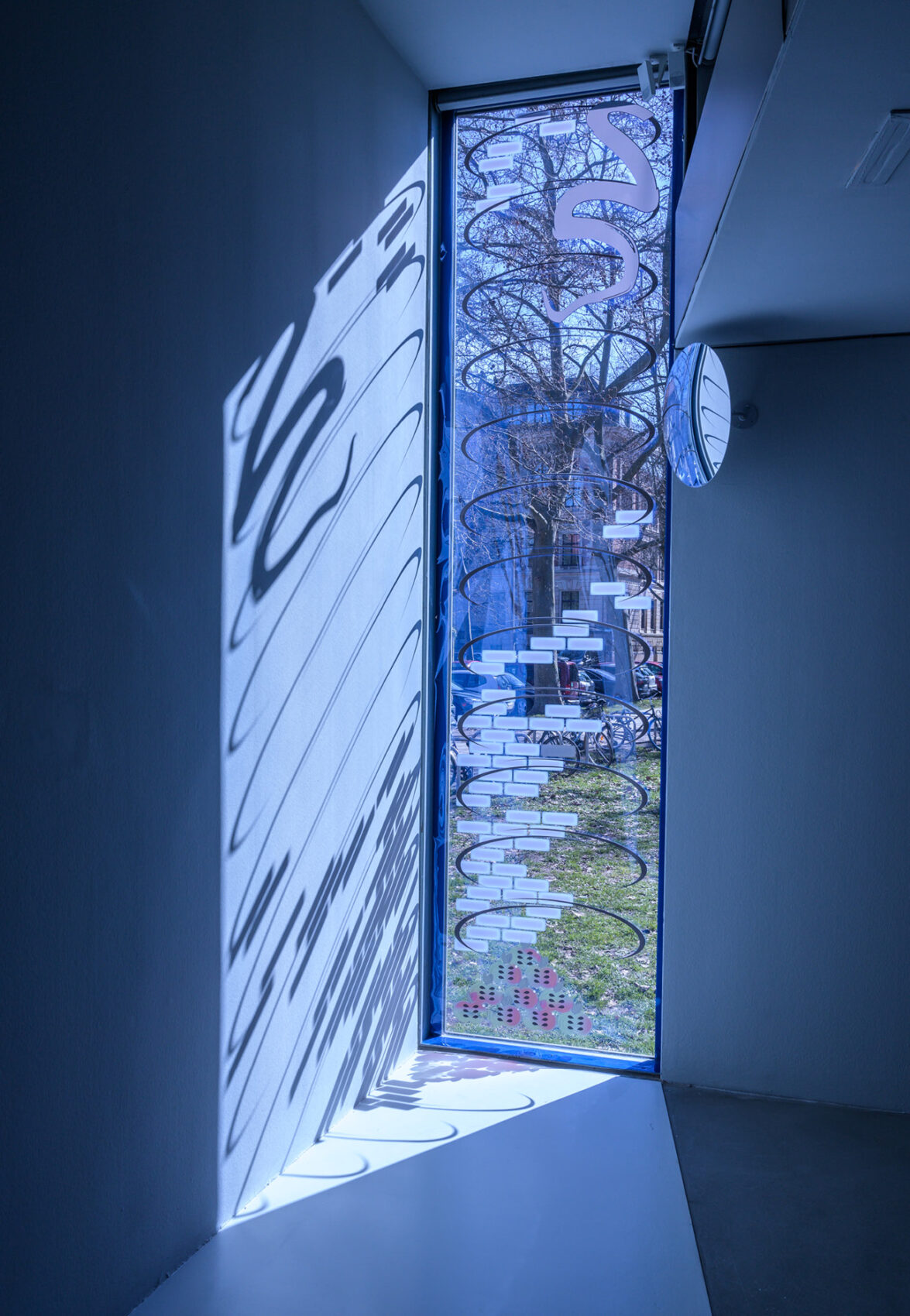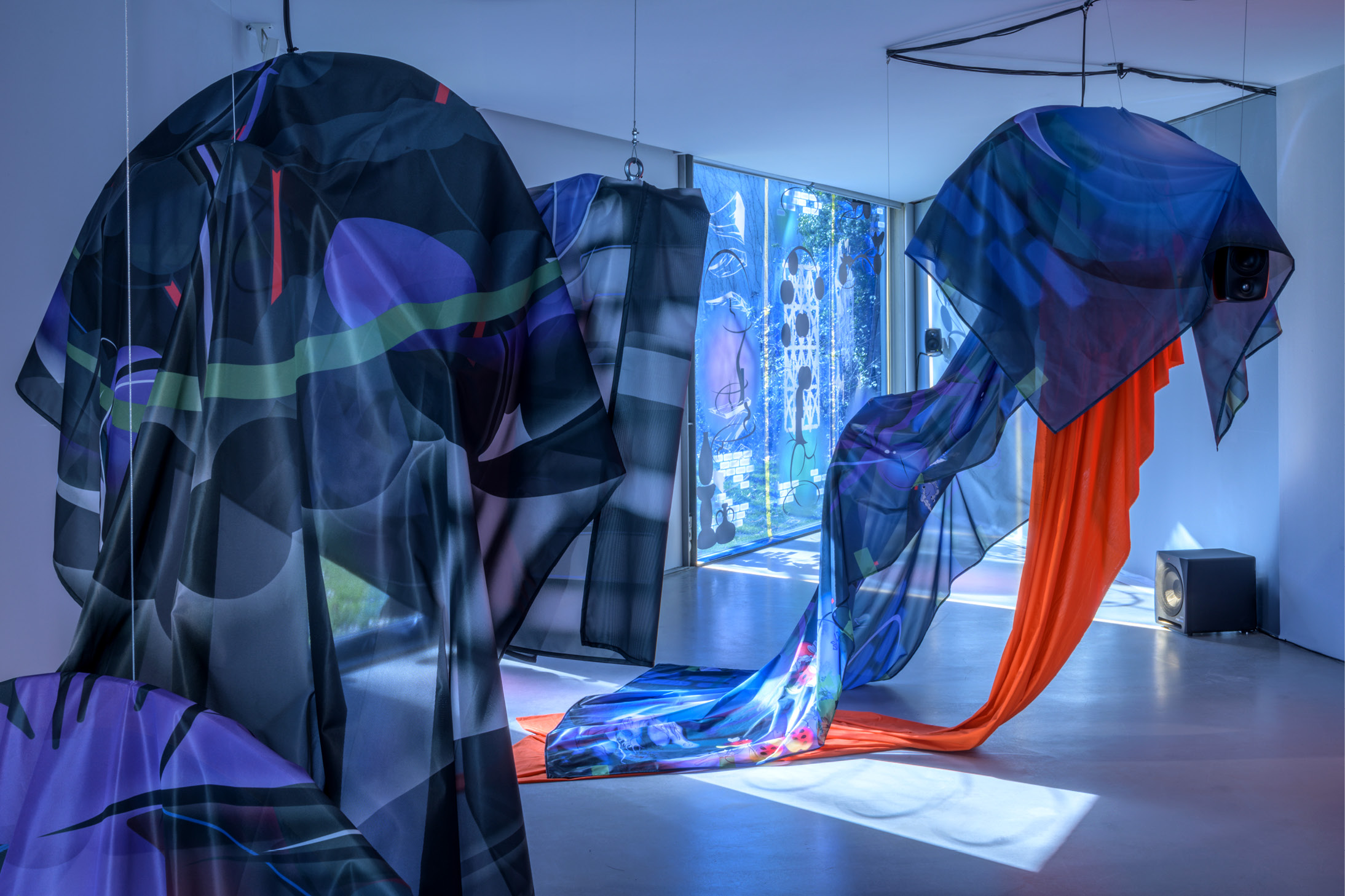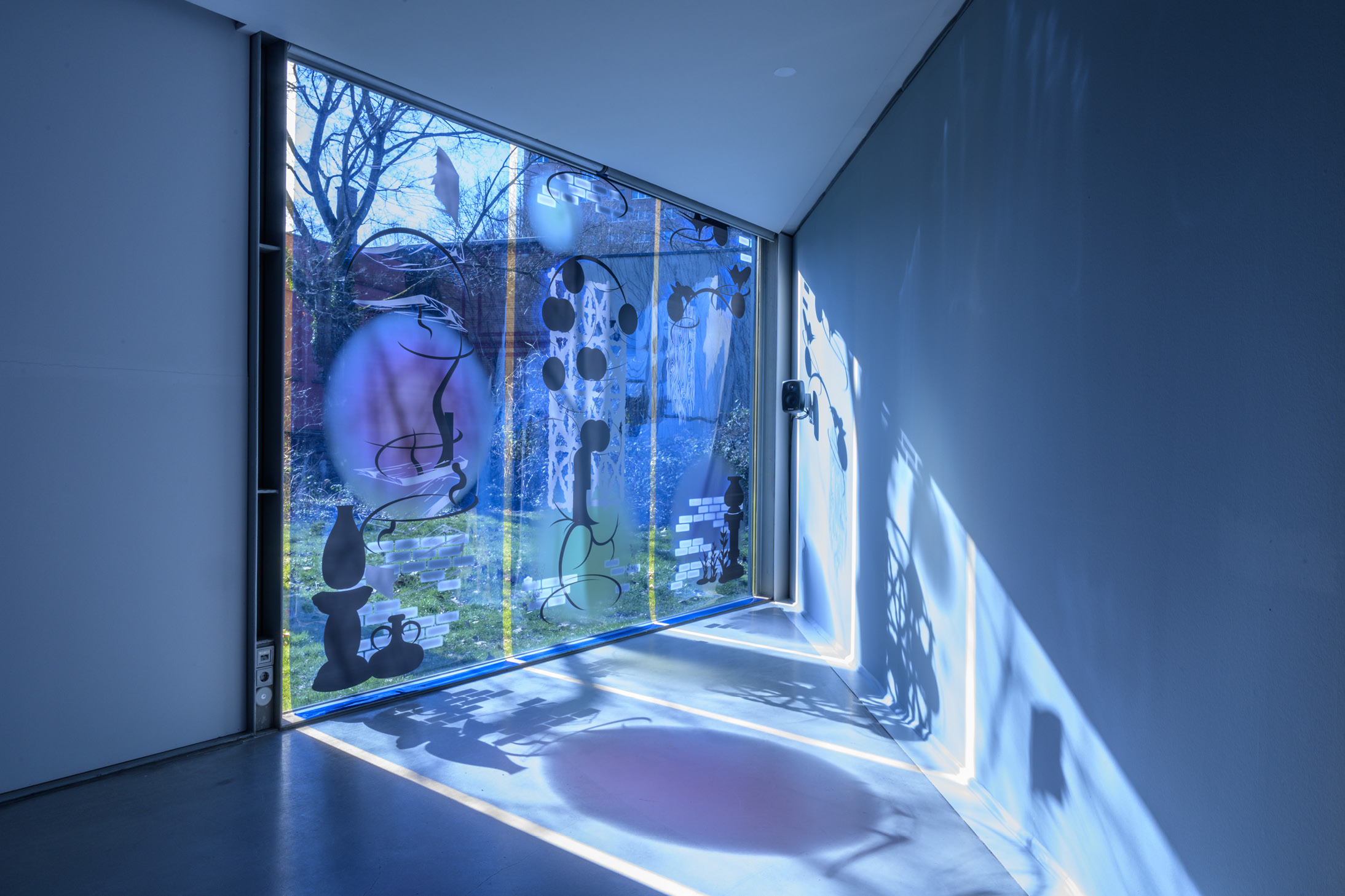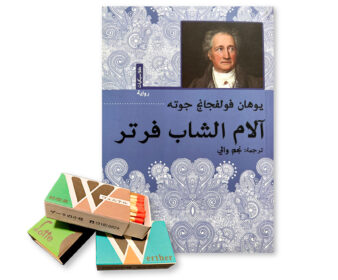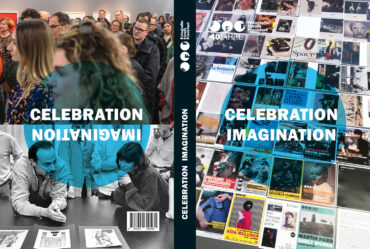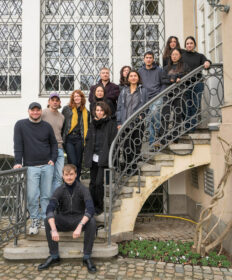Tatjana Stürmer
Tatjana Stürmer’s works oscillate between graphic design and multimedia installations. They examine how spoken, written and visual languages affect our social and political experiences. Stürmer’s current focus lies on different sources of writing by female authors from the early Middle Ages, which she relates to the present in order to deconstruct social relations of power and powerlessness. Stürmer holds a degree in Communication Design, Media Art and Art Studies from the HfG Karlsruhe. Her works have been part of exhibitions at Badischer Kunstverein Karlsruhe, Galerie für zeitgenössische Kunst in Leipzig, MEWO Kunsthalle Memmingen, Ornamenta24 and Kunststiftung Baden-Württemberg, among others. In 2023, she traveled to New York for a research stay with a grant from the Cultural Foundation of Hesse (Hessische Kulturstiftung); in summer 2025, she will complete her research during another stay in New York.
Seda Pesen is an art historian and author. After studying Art History and Comparative Literature in Bonn, she completed her Master’s degree in Critical and Curatorial Studies in Frankfurt am Main. She currently works as a research assistant at the Empirical Visual Aesthetics (EVAlab) at the University of Vienna. Her research focuses on subjective configurations of the gaze, aesthetic judgments and their habitual entanglements. She has previously worked at the Institute of Art History at the University of Bonn, at Mainz University of Applied Sciences and at exhibition venues such as the Kölnischer Kunstverein and the Bundeskunsthalle Bonn.
Seda Pesen Let’s start by talking about your work The Virgin, the Cleaver and the Martyr from 2023. In this installation, you visually and aurally engage with a medieval drama by Hrotsvit von Gandersheim, in which three women die as martyrs for their self-determination. To me, this approach is quite characteristic of your artistic practice: to place female spaces of experience from the past and present in relation to one another. Can you say something about how you find those texts? And what are the parameters of the selection?
Tatjana Stürmer Initially, I wasn’t specifically looking for a text for this work. I came across a synopsis on a medieval blog that was only three lines long and so strange that it piqued my interest. It described a drama text by Hrotsvit of Gandersheim, a canoness born around the year 935. Hrotsvit von Gandersheim remains to be known for her texts and served as a role model for the women’s movement in the early 20th century. I obtained a German translation of her six dramas. When I read the dramas, I found the content both exciting and alienating. Eventually I realized that this strangeness stemmed from the translation: Hrotsvit originally wrote in Latin. Accordingly, I read many translations comparatively. It is remarkable that her dramas were discussed in reading circles in New York in the 1970s. The Virgin, the Cleaver and the Martyr is based on The Martyrdom of the Holy Virgins Agape, Chionia, and Hirena(Dulcitius) in the English translation by Katharina Wilson (1998). It describes the fate of three young women: they are locked in a kitchen because they do not want to be married off. In search of the women, the governor Dulcitius, who desires them, enters the kitchen at night; he mistakes them for pots and caresses them. Despite the comedy of the scene, it is quite brutal. I am fascinated by this ambiguity, because it cannot be easily translated or clearly positioned. When a text wanders through time, meanings shift. I find it intriguing to leave the effect of the grotesque open-ended. Working with this English translation eventually led to the development of my project proposal for the Cultural Foundation of Hesse’s travel grant, where I aim to explore the question of what underpins the engagement with medieval texts in the United States.
Pesen I suppose one could say that the entire reception history of the drama text is inscribed in your work.
Stürmer The title of the work reflects the multifaceted and ambiguous reception history of both the literary-fictional body of work and the biography of Hrotsvit of Gandersheim. Her plays were very well known during her lifetime. Some time after her death, Hrotsvit von Gandersheim was forgotten for centuries. It wasn’t until the humanists rediscovered her that she resurfaced. Hrotsvit was falsely attributed to various families and places of origin—until eventually, her very existence was questioned, and her works were attributed to male authors. Her identity was thus fragmented, and her literary corpus torn apart. The title The Virgin, the Cleaver and the Martyr refers to these processes: The Virgin symbolizes her cloistered life and steadfastness, the Cleaver represents the dismemberment of her literary work over the centuries, and the Martyr embodies the figure into which she was transformed when her existence was disputed. These three figures merge into a singular, transhistorical identity. Hrotsvit is not one, but many women, whose time-transcending collective body carries the ‘We’ through history—mystical, mysterious, and powerful in their emancipatory force.
Pesen Your approach is multi-layered: you use both visible and audible elements. You build somewhat sensory worlds of thought around the text. Why do you operate with these different levels? And what role does the physicality of the viewer play for you?
Stürmer Due to the simultaneity of different media elements, there is no dominant narrative. When each viewer sees or hears something different, simultaneities, gaps and fragments emerge. For The Virgin, the Cleaver and the Martyr, I collaborated with the composer Lukas Rehm, who helped me develop the text aurally. Together, we recorded it using three voices: two opera singers and a narrator. These voices are played back through multiple channels via loudspeakers suspended from the ceiling; they communicate with each other as if in a chamber opera. The sounds surround the viewer and create an auditory experience that cannot be fully grasped mechanically. Those who listen can get very close and bring their cheeks close to the loudspeakers to catch every whisper; they snuggle up to the technology and physically engage with it. The enigmatic nature of medieval authors like Hrotsvit von Gandersheim plays an important role here. Semi-opaque, symbolically printed fabrics drape the loudspeakers, allowing them to float with a fluid physicality at eye level with the listeners. Depending on the daylight, refracted by blue foils on the windows, the speakers appear to exist in the twilight between sunrise and sunset, while long, wandering shadows stretch over them and across the walls of the exhibition space.
Pesen Ornament plays an important role in your works. It has had a rather rocky road, especially in terms of art theory, if we think of Ornament und Verbrechen by Adolf Loos, who criticized ornament in art and architecture as culturally backward. What symbolism does it carry for you?
Stürmer I differentiate between an ornamental way of working and an ornament as a graphic-visual element. Ornamental work requires an excessive, creative potential, an excess of time and attention. For me, an ornament is not a symbolic placeholder. I am rather interested in its function as a sign and in its ambiguity. For me, the ornament contrasts with a line of text. An ornament interjects, it nestles in and then disrupts: its interpretation(s) invite chronological shifts and complications. As a result, there is no longer just one reading, but a multitude of possible interpretations.
Pesen Let’s move on to your current project. You chose New York for the travel grant from the Cultural Foundation of Hesse. I find that exciting, because for me the city is a melting pot of Western history, if we think of colonization or major developments in neoliberalism. Why New York?
Stürmer During my research for The Virgin, the Cleaver and the Martyr, I was surprised at how many medieval sources and secondary texts there are in archives and collections on the East Coast, including texts by mystics that particularly interest me. I had assumed they were in Europe. And I had many questions: Are there any connections between a mystical experience and writing by hand? Can the disappearance of mystical writers in Europe be linked to the invention of printing and the early Enlightenment? I wanted to investigate the extent to which the reproduction of mystical texts and their transatlantic transmission had an identity-forming effect in the “newly discovered” North America. But I was not only interested in questions relating to production, reproduction and content, but also in the value that is attributed to medieval texts in the art trade. Sotheby’s, founded in London and now a leading global auction house with its headquarters in New York and other locations, built its success starting in 1744 through the sale of a library of valuable manuscripts. This development unfolded through the interplay of overseas trade routes, the art market, and the historical context—an interplay that I aim to explore further.
Pesen One of your main places of work was the Beinecke Library, a repository for rare manuscripts. Can you tell me more about your research process?
Stürmer Working in a manuscript collection requires a lot of preparation; simply “stumbling across something” is difficult there. On The Manuscript Road Trip, a medieval blog by Lisa Fagin Davis, you can find a map that indicates where certain manuscripts and books are kept—at J. P. Morgan, the Beinecke Library or the New York Public Library, for example. I first had to check what was publicly accessible. Many libraries and archives are digitizing their collections, but there is a big difference between receiving something digitally and physically. Viewing the manuscripts is a separate process, almost performative: you show your passport, are brought the manuscript and are required to wash your hands for two minutes beforehand because you are only allowed to touch the parchment with your bare fingers. In the Beinecke Library, you work in a glass-walled room with 20 tables, each equipped with a camera overhead. Under the watchful eyes of several security guards, you can look at the manuscript. It’s a peculiar dynamic: this auratic object, which demands so much sensitivity, meets a transparent, monitored environment. This summer, I will complete my research in New York and begin translating it into a new artistic work. I’m really looking forward to that.
